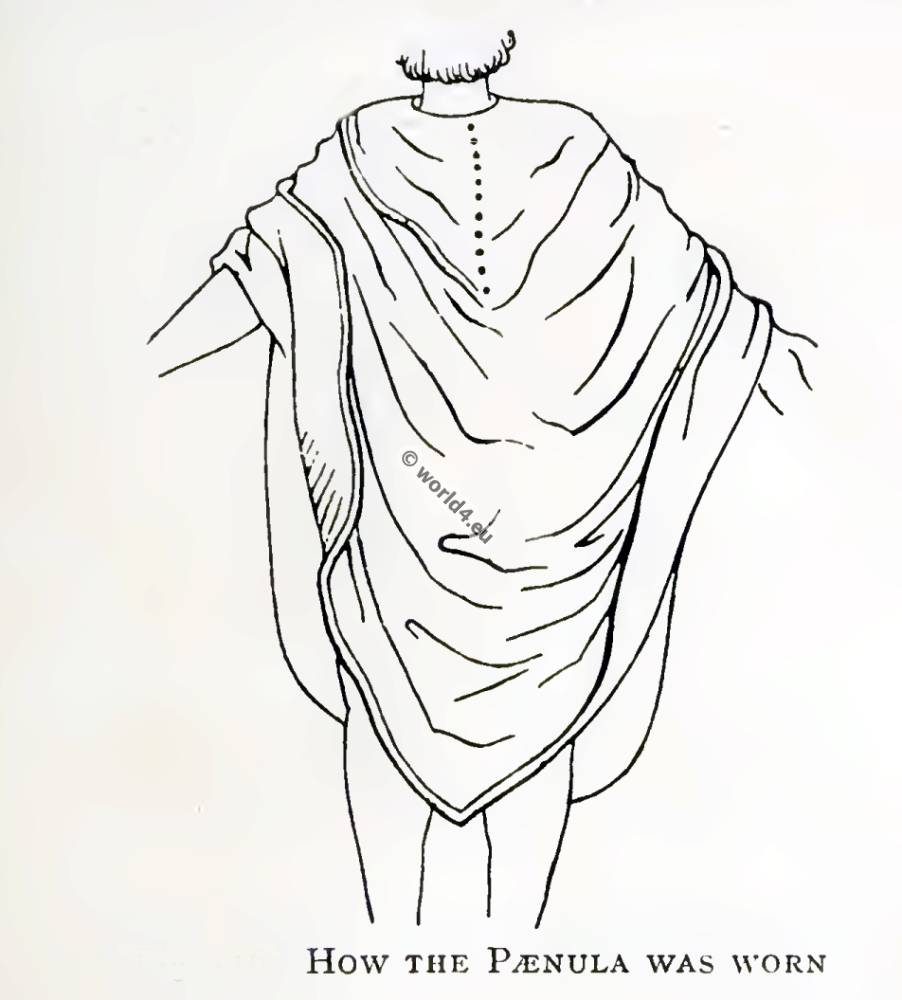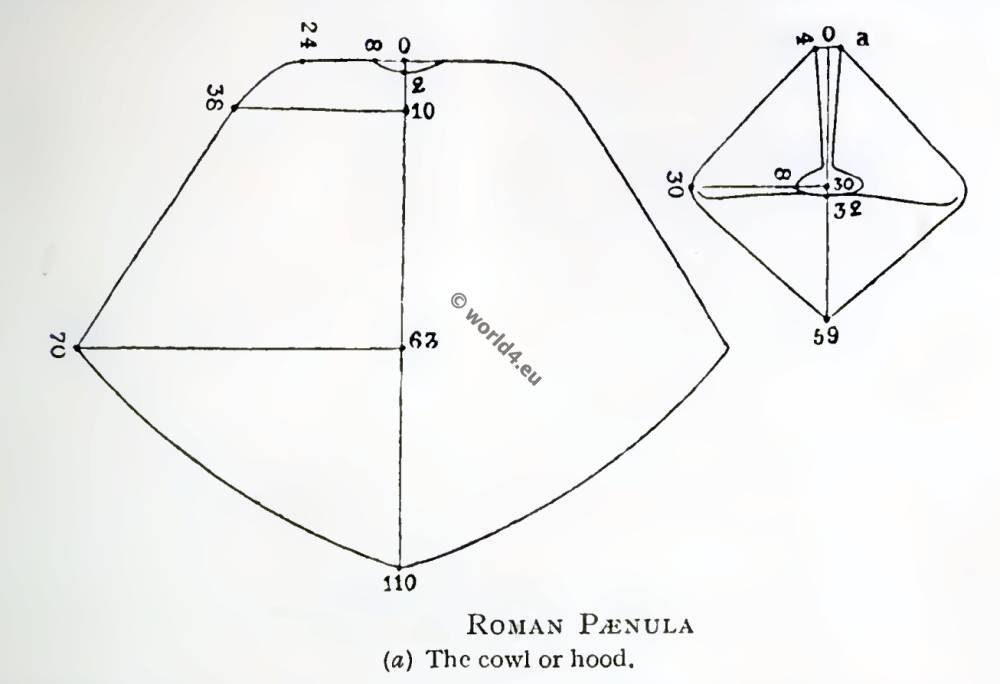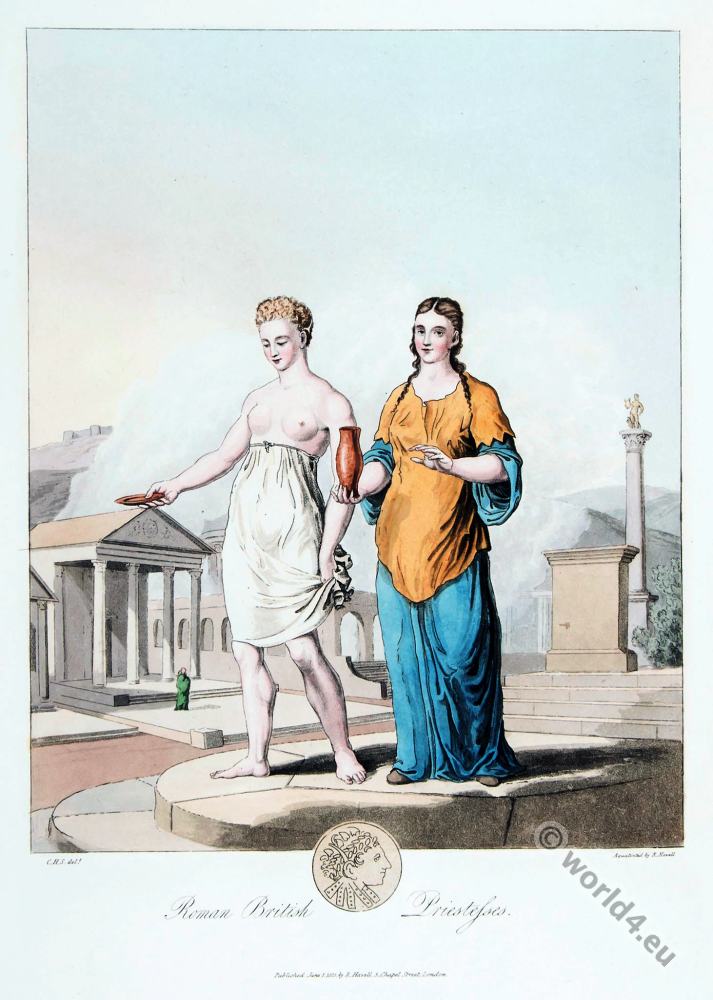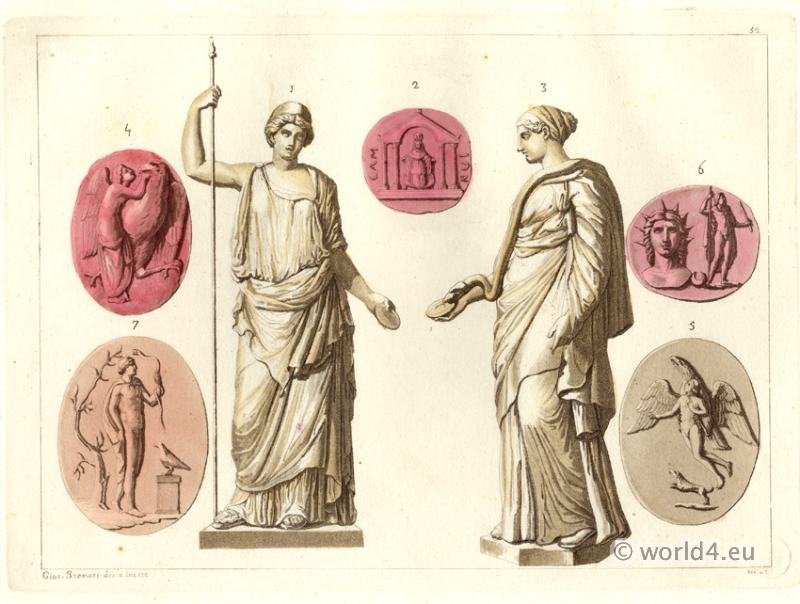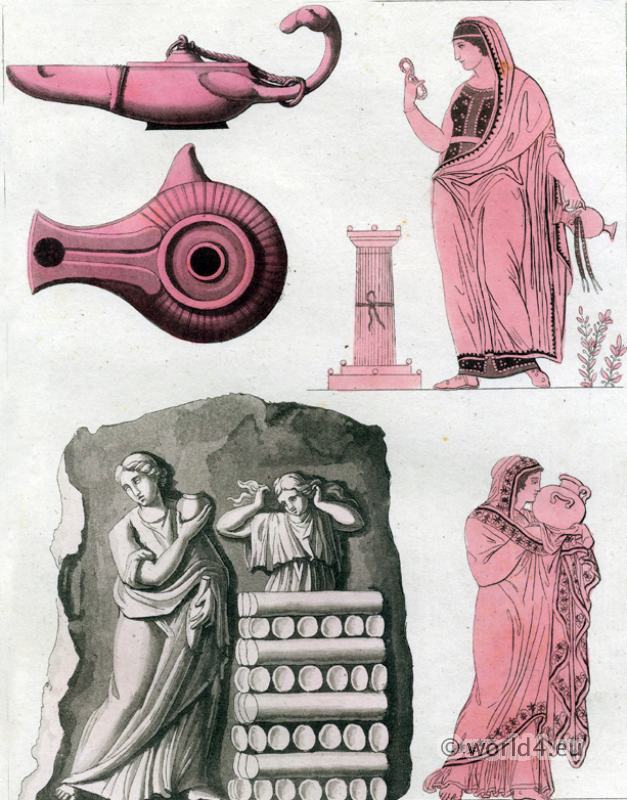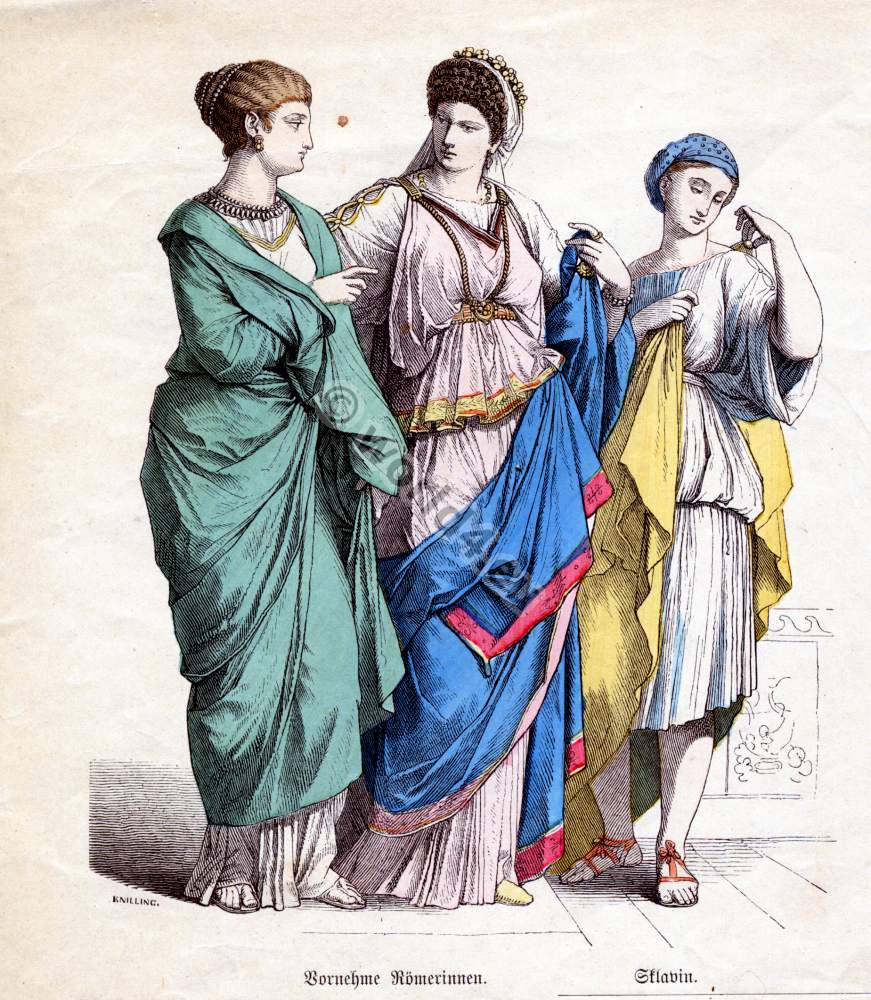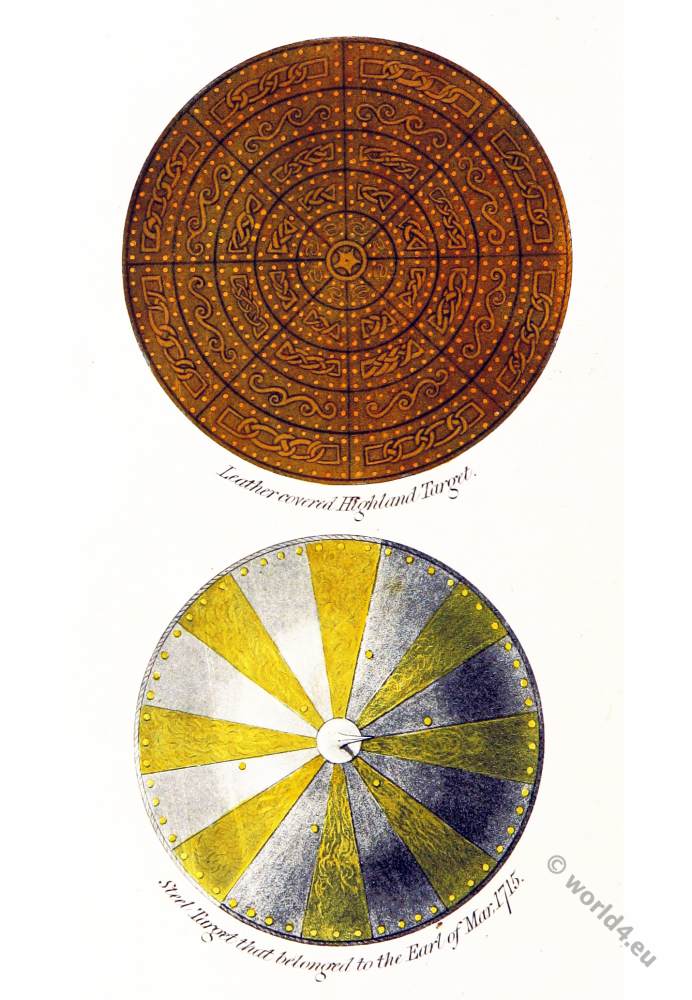The Roman Paenula.
The cowl or hood. Ancient roman traveling cloak.
The Paenula was a bell-shaped garment, worn in inclement weather. In most cases it was closed all round, but occasionally it was left open down the front. When it was closed all round it had to be lifted at the sides in order to allow free movement of the arms.
As a rule it had a hood attached to it. (1) It had an opening at the breast which was fastened at the top with a pin. The hood was joined to the garment round the neck, and the flaps were probably sewn down to the edges of the breast opening. The paenula was usually made of tightly woven, rough woollen stuff, but sometimes of soft leather.
1 – There were numerous small variations in the cut of the paenula. Occasionally it had no hood. Sometimes it was the same length all round, sometimes it was shortened at the sides. The back sometimes ran down to a point, and sometimes this point was rounded off, and so on.
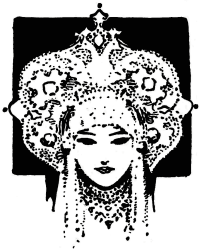
Continuing
- Roman Costume and Fashion History.
- Roman clothing in its diversity and development.
- The early toga. Former roman clothing. 700 BC. – 500 BC.
- The Toga and the manner of wearing it.
- The toga of a Roman senator. The armor of a Roman general.
- The costume of the Roman women. Republican Rome.
- The usual Roman garment during the Republican Rome.
- Roman Republic. Senator in the toga. A commoner in the paenula.
- The Togatus and the Roman ladies of the imperial period.
- The Roman Tunica or the Dorian and the Ionian chiton.
- Musical instruments. Wind and Stringed instruments of ancient Rome.
- Roman headgear and hairdos of antiquity.
- The Roman army. The legionary soldier. Equipment, assault weapons.
- Military of ancient Rome. Roman legions. Field signs. The legionary eagle.
- Roman soldiers and gladiators. Function, armor and armament.
- The Roman legionary. Reconstructed after reliefs of the Trajan’s Column.
- The Lictor panel. A stately Roman lictor in a rich costume.
- The Roman Paenula. The cowl or hood. Traveling cloak.
- Pontifex Maximus. Roman high priest of antiquity. Collegium Pontificum.
- An Augur. Roman official priesthood.
- The Rex Sacrorum also known as Rex Sacrificulus.
- Religious sacrificial ceremonies of Romans in ancient times.
- A quadriga. Greek-Roman Gods. The ancient greek-roman culture.
- The Clothing of the Vestal Virgins. The Cult of Vesta in ancient Rome.
- Shoes of antiquity. Sandals, closed footwear of the ancient world.
- The Etruscans. Culture, costumes, warriors in Etruria.
- Greek-Roman furniture. Throne chair, Bisellium, Sella castrensis.
- Greek-Roman art. Mosaics, painted bas-reliefs and wall paintings.
- A quadriga. Greek-Roman Gods. The ancient greek-roman culture.
- The Roman Ornament. Corinthian and Composite Capitals. The Acanthus.
- Rome. The atrium. Interior of an ancient Roman palace.
- Pompeji. Roman architecture. The Pompeian House. The Atrium.
- The Roman Pantheon, a temple to all the Gods.
- Britain under Roman rule. Celt and Roman. England 43 BC to 440 AD.
- Hadrians Wall. Roman Britain. Maps, Places, Tribes.
- The Gallic and Gallo-Roman costume period.
Discover more from World4 Costume Culture History
Subscribe to get the latest posts sent to your email.

